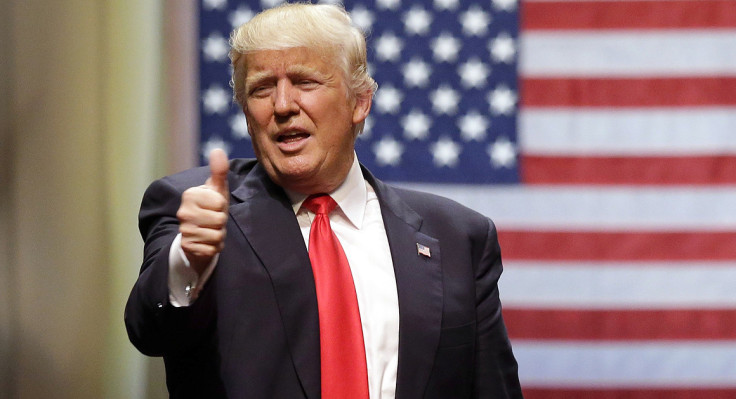Trump's LA National Guard Deployment Sparks Constitutional Crisis as Courts Battle Over Military Control
The deployment represents the first time since 1965 that a president has activated National Guard over gubernatorial objections.

The Federal appeals court judges are locked in a high-stakes legal battle over President Donald Trump's controversial deployment of 4,000 National Guard troops and 700 Marines to Los Angeles, with the 9th Circuit Court of Appeals allowing Trump to maintain control whilst California Governor Gavin Newsom pursues an unprecedented constitutional challenge.
The deployment, ordered on 7th June following immigration enforcement protests, marks the first time in 60 years that a president has activated a state's National Guard against the express wishes of its governor—a move that has triggered what legal experts describe as a fundamental test of federalism and executive power.
The extraordinary military presence, now entering its third week on Los Angeles' streets, has transformed neighbourhoods where children once played safely into zones patrolled by combat-trained Marines. However, the week-long downtown curfew was lifted on Tuesday, 17 June, after protests subsided.
Federal Court Ruling Creates Constitutional Standoff
US District Judge Charles R Breyer delivered a scathing 36-page ruling on 12th June, declaring Trump's actions 'illegal—both exceeding the scope of his statutory authority and violating the Tenth Amendment to the United States Constitution.' However, the 9th Circuit Court of Appeals immediately blocked Breyer's order, allowing Trump to retain military control whilst the case proceeds through higher courts.
'The continued unlawful militarisation' of Los Angeles 'inflames tensions with protesters, threatening increased hostilities and loss of life,' Judge Breyer wrote, systematically dismantling the administration's legal justifications.
Military Deployment Escalates Beyond Initial Scope
Major General Scott Sherman, commanding Task Force 51, revealed that approximately 500 National Guard troops received specialised training to accompany federal immigration agents on raids—a development that pushes military personnel closer than ever to direct law enforcement operations.
The total military presence swelled to over 4,700 personnel, with 2,100 National Guard members actively deployed across Los Angeles, Paramount, and Compton, alongside 700 Marines from Twentynine Palms base. Acting Defence Department comptroller Bryn MacDonnell estimated the deployment cost at £107 million.
Legal Challenge Exposes Deeper Constitutional Questions
California Attorney General Rob Bonta filed the lawsuit arguing Trump's move represents an 'unprecedented power grab' that unlawfully bypassed Governor Newsom by putting National Guard troops under federal control without gubernatorial consent.
'Let me be clear: There is no invasion. There is no rebellion,' Bonta stated. 'The President is trying to manufacture chaos and crisis on the ground for his own political ends.'
The legal dispute centres on Section 12406 of federal law, which permits presidential control of National Guard units during foreign invasion or rebellion against the US government—conditions that Judge Breyer explicitly found did not exist in Los Angeles.
Widespread Arrests Follow Weeks of Unrest
By mid-June, law enforcement agencies had arrested at least 851 people across the Los Angeles metropolitan area since protests began, with charges ranging from failure to disperse and assault on officers to looting and arson.
The Los Angeles Police Department accounted for nearly half of these arrests, whilst California Highway Patrol detained 106 individuals and the County Sheriff's Department arrested nine others.
Violence erupted following Immigration and Customs Enforcement raids on 6th June, when federal agents detained over 40 people across multiple Los Angeles locations, including staging areas near Home Depot stores and garment factories.
Protesters responded by setting fires, throwing projectiles at law enforcement, and blocking federal vehicles, prompting authorities to deploy tear gas and less-lethal munitions.
Appeals Court Decision Sets Precedent for Future Military Deployments
The 9th Circuit panel, comprising two Trump appointees and one Biden appointee, determined that Trump had a 'legitimate interest in protecting federal employees' when deploying troops, citing evidence that protesters had 'pinned down' federal officers and thrown 'concrete chunks, bottles of liquid and other objects' at them.
Trump celebrated the ruling on social media, hinting at broader implications: 'This is much bigger than Gavin [Newsom]. All over the United States, if our Cities, and our people, need protection, we are the ones to give it to them should State and Local Police be unable.'
Historical Context Amplifies Constitutional Significance
The deployment represents the first time since 1965 that a president has activated a state's National Guard over gubernatorial objections, when President Lyndon Johnson sent troops to Alabama to protect civil rights demonstrators.
A group of former service secretaries and four-star military commanders filed an amicus brief supporting Newsom's challenge to the deployment.
Legal proceedings continue on multiple fronts, with California urging courts to determine 'how long such federalisation is permissible in the face of changed circumstances' and whether troops may be deployed 'in areas where those conditions never existed or have ceased to exist.'
The case now heads toward potential Supreme Court review, with constitutional scholars watching closely as it could fundamentally reshape the balance between federal executive power and state sovereignty in domestic military deployments.
© Copyright IBTimes 2025. All rights reserved.






















